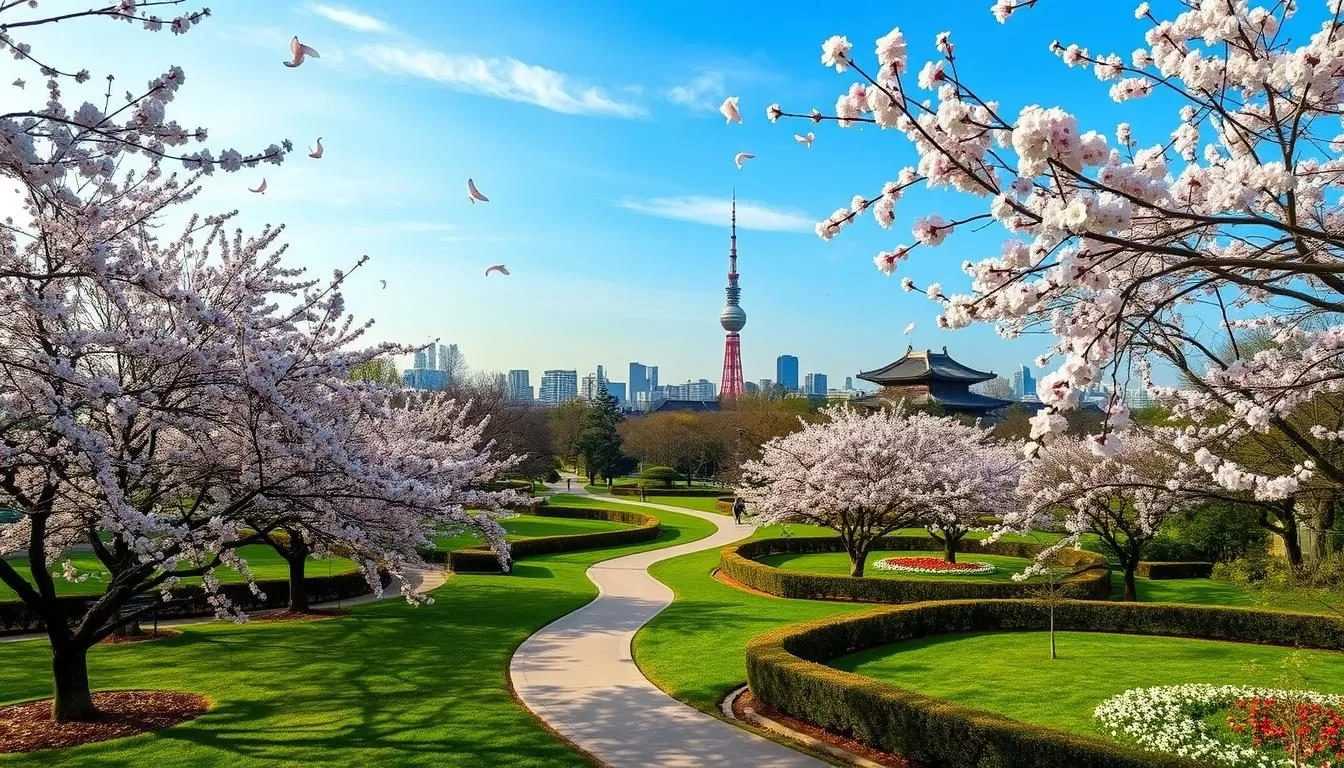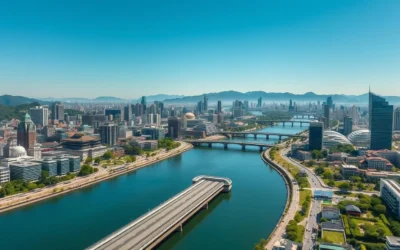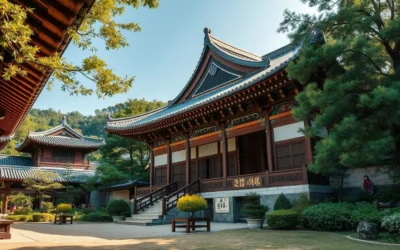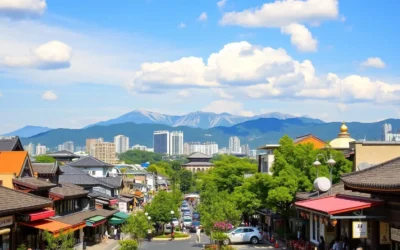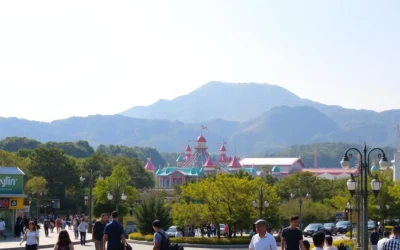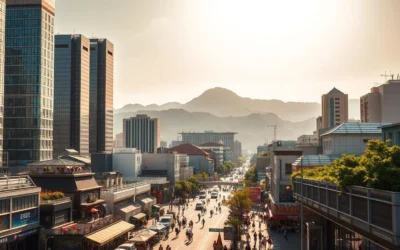✓ Accommodations✓ Flights✓ Rental Cars✓ Tours & Activities
Planning a trip involves more than just picking a destination. Understanding the weather and seasonal changes can make all the difference in creating a memorable experience. Whether you’re a seasoned traveler or a first-time visitor, knowing the best time to visit can help you avoid unexpected surprises.
From chilly winters to humid summers, the climate varies significantly throughout the year. For instance, temperatures can drop to 21°F in January and soar up to 85°F in August. Monsoon rains in summer and cold northern winds in winter add to the seasonal diversity.
This guide will walk you through the key factors to consider, such as temperature ranges, rainfall patterns, and local weather phenomena. By the end, you’ll have the insights needed to pick the perfect time for your journey.
Introduction to Your Weather-Savvy Journey in Seoul
Choosing the right moment to explore can transform your travel experience. Understanding the climate is crucial to avoiding surprises and making the most of your adventure. From mild springs to chilly winters, the weather here is as dynamic as the culture itself.
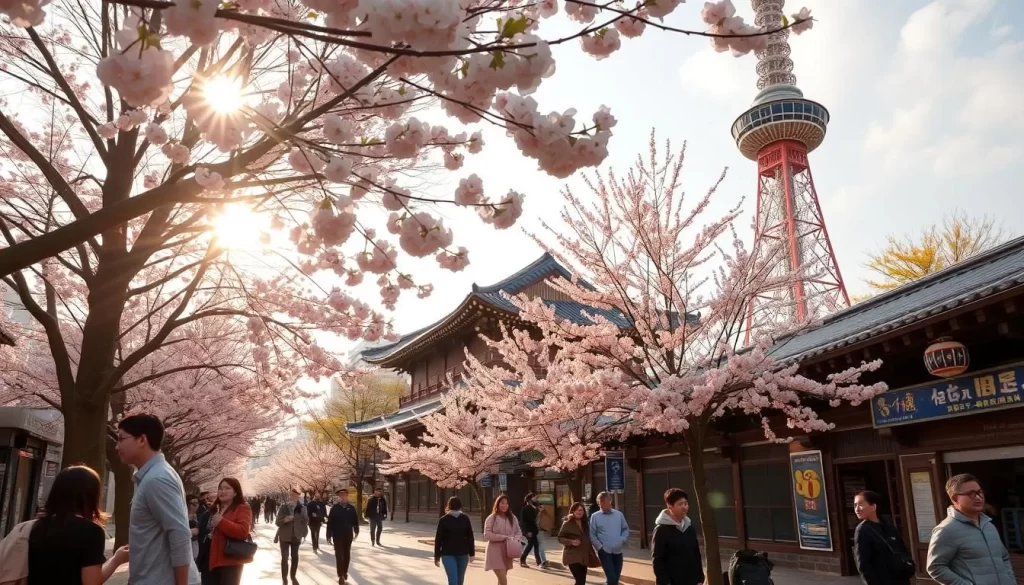
What to Expect from the Climate
The destination boasts a diverse climate, with temperatures ranging from 52°F in May to 85°F in August. Spring and autumn are particularly pleasant, offering mild weather perfect for outdoor activities. Summer brings humidity, while winter can be quite cold, with temperatures dropping significantly.
Planning your travel around these patterns ensures you’re prepared for any conditions. For instance, May is ideal for festivals like the Boseong Aromatic Tea Festival, thanks to its comfortable weather.
Why This Guide Will Help You Plan Your Trip
This guide provides detailed insights into the best time visit, helping you avoid crowds and enjoy comfortable weather. You’ll learn what to pack, when to go, and how to make the most of each month.
By understanding daily weather patterns, you can plan activities like visiting Gyeongbokgung Palace, which hosts a changing of the guard ceremony three times a day. Whether you’re exploring temples or markets, this guide ensures a seamless experience.
“Timing is everything when it comes to travel. Knowing the weather can make or break your trip.”
In the next sections, we’ll break down each season, offering tips and insights to help you choose the perfect time visit. Stay tuned for a detailed look at what each month has to offer!
Understanding South Korea’s Four Distinct Seasons
Exploring a new place means embracing its seasonal rhythms. Each season brings its own charm, from blooming flowers to snowy landscapes. Knowing what to expect helps you plan activities and pack accordingly.

The Beauty of Spring and Autumn
Spring is a time of renewal, with moderate temperatures and cherry blossoms painting the landscape. From April to June, the weather hovers around 52°F to 68°F, making it ideal for outdoor festivals and sightseeing.
Autumn, on the other hand, offers crisp air and vibrant foliage. The temperature ranges from 50°F to 70°F, perfect for hiking or exploring cultural sites. This season is also less crowded, giving you a more peaceful experience.
Experiencing Summer and Winter
Summer brings heat and humidity, with temperatures often reaching 85°F. The monsoon season lasts from June to September, bringing heavy rain and occasional storms. Despite the weather, summer is great for beach visits and lively festivals.
Winter, however, is a stark contrast. Temperatures can drop below 19°F, with occasional snowfall. This season is perfect for winter sports or enjoying cozy indoor activities. Packing warm clothing is essential to stay comfortable.
“Each season offers a unique way to experience the destination. Timing your visit can make all the difference.”
| Season | Temperature Range | Key Features |
|---|---|---|
| Spring | 52°F – 68°F | Cherry blossoms, mild weather |
| Summer | 75°F – 85°F | Monsoon rains, beach activities |
| Autumn | 50°F – 70°F | Colorful foliage, fewer crowds |
| Winter | 19°F – 35°F | Snowfall, winter sports |
Understanding these seasonal changes ensures you’re prepared for any weather. Whether you’re chasing cherry blossoms or enjoying a snowy retreat, timing your visit makes all the difference.
Seoul, South Korea: Best Months for a Weather-Savvy Trip
Timing your visit to align with the perfect weather can elevate your travel experience. The shoulder seasons, from mid-April to mid-June and September to October, offer a mix of mild temperatures and vibrant local events. These periods are ideal for exploring without the extremes of summer humidity or winter cold.
Ideal Weather Conditions for Touring
Shoulder seasons provide the best weather for outdoor adventures. Temperatures range from 50°F to 70°F, making it comfortable for sightseeing and activities like hiking. Reduced humidity during these months ensures a more pleasant experience compared to the sticky summer heat.
April is particularly special, as it marks the peak of the cherry blossom season. The city transforms into a picturesque landscape, attracting visitors from around the world. May continues this trend with pleasant weather, perfect for festivals like the Yeon Deung Hoe Lotus Lantern Festival.
Benefits of Visiting During Shoulder Seasons
Traveling during shoulder seasons means fewer crowds and cost-effective options. Airfare and accommodations are often more affordable compared to peak summer or winter months. This allows you to enjoy the destination without the hustle and bustle.
Improved air quality and milder conditions make it an ideal time for outdoor activities. Whether you’re exploring cultural sites or attending local festivals, the weather enhances your experience. For example, October offers stunning autumn colors and events like the Busan Fireworks Festival.
“Visiting during shoulder seasons ensures a balance of great weather, fewer crowds, and unforgettable experiences.”
Choosing the right month can transform your trip into an unforgettable adventure. From cherry blossoms to autumn foliage, these seasons offer something for every traveler.
Seasonal Weather and Temperature Insights in Seoul
Understanding the climate and environmental factors is key to planning a smooth and enjoyable trip. The weather here varies significantly throughout the year, with distinct patterns that can impact your experience. From humid summers to crisp winters, knowing what to expect helps you prepare better.
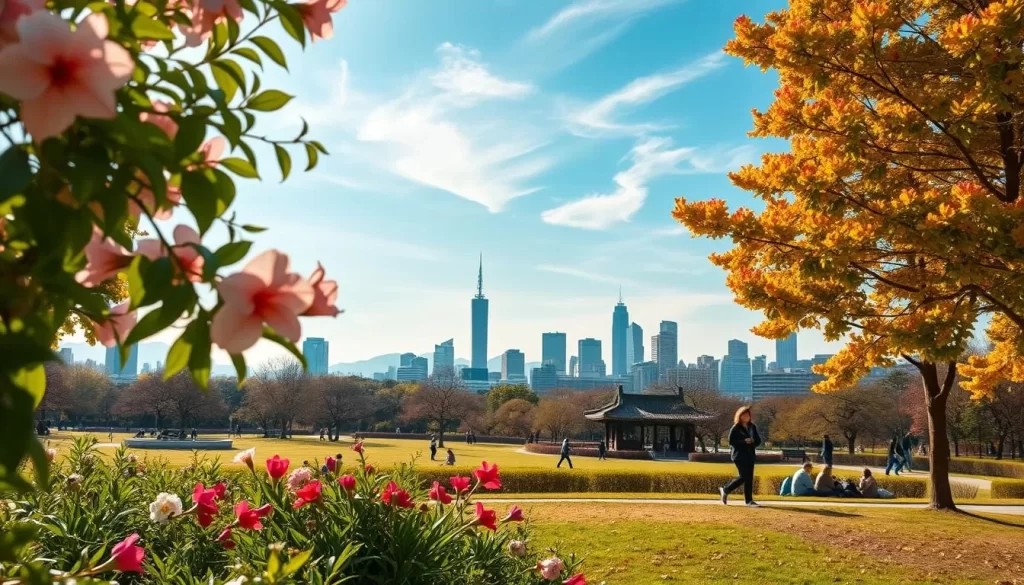
Monthly Temperature and Rainfall Patterns
January is the coldest month, with temperatures dropping to around 21°F, while August can reach highs of 85°F. July is the wettest month, with rainfall averaging 14-15 inches, making it the peak of the monsoon season.
Spring and autumn offer milder conditions, with temperatures ranging from 50°F to 70°F. These seasons are ideal for outdoor activities and exploring local festivals. Winter, on the other hand, is perfect for those who enjoy crisp, clear days and winter sports.
Dealing with Air Quality and Fine Dust
Spring often brings fine dust, known as hwang sa, which can affect air quality. This is especially common from March to May. To minimize exposure, consider wearing masks and checking air quality indexes daily.
Summer’s high humidity can also impact air quality, particularly in urban areas. Staying hydrated and planning indoor activities during peak heat hours can help you stay comfortable.
“Being informed about weather conditions can greatly enhance your travel experience.”
By understanding these patterns, you can plan your visit south korea more effectively. Whether you’re exploring during the vibrant festival season or enjoying the crisp winter air, preparation is key to a memorable trip.
Festivals and Events Throughout the Year
Experiencing the cultural heartbeat of a destination is one of the most rewarding aspects of travel. In this country, festivals and events are deeply rooted in tradition, offering a glimpse into its rich heritage. From vibrant spring celebrations to cozy winter gatherings, there’s always something to look forward to.
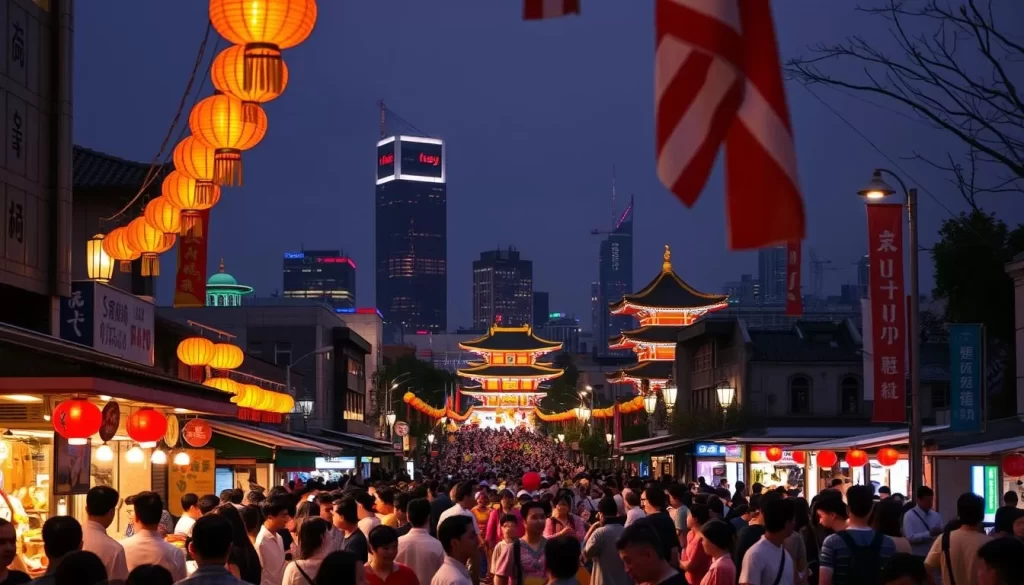
Seasonal Festivals: Cherry Blossoms, Chuseok, and More
Spring is synonymous with cherry blossoms, and the city comes alive with festivals celebrating this natural wonder. Areas like Jamsil and Hapjeong are particularly popular, with wide boulevards lined with blooming trees. March and May are ideal months to witness this breathtaking event.
Autumn brings Chuseok, a major harvest festival celebrated across the country. Families gather to share traditional meals and honor their ancestors. The Gimje Horizon Festival, featuring rice wine competitions, is another highlight during this season.
Local Celebrations and Cultural Experiences
Summer is marked by lively events like the Ultra Korea Music Festival, which draws crowds from around the world. However, the monsoon season can influence festival dates, so planning ahead is essential.
Winter offers its own charm, with snowfall transforming the landscape into a magical setting. Festivals like the Hwacheon Sancheoneo Ice Festival celebrate the season with ice fishing and other activities.
Whether you’re exploring urban centers or rural villages, each city has its own unique way of celebrating. Attending these events is a fantastic way to immerse yourself in the local culture and create unforgettable memories.
“Festivals are the heartbeat of a culture, offering a chance to connect with its people and traditions.”
For more insights into springtime activities, check out this guide to spring in Seoul. To explore year-round events, visit this .
Regional Weather Variations: From Seoul to Busan and Beyond
Weather patterns can vary greatly across different regions, shaping your travel experience. Understanding these differences ensures you’re prepared for any condition and can make the most of your trip. From coastal cities to mountainous areas, each location offers unique climates that influence activities and packing needs.
Climate Differences Between Major Cities
In the capital, winters can be harsh, with temperatures dropping below 19°F and occasional snowfall. However, coastal cities like Busan experience milder winters, with temperatures rarely falling below 32°F. This makes Busan a more comfortable destination during the colder time year.
Pyeongchang, known for its elevation, has an extended winter season, making it ideal for snow sports. In contrast, the capital’s air quality can be affected by fine dust from neighboring regions, especially in spring. Coastal areas, on the other hand, benefit from cleaner air due to sea breezes.
Impact of Regional Weather on Travel Plans
When planning your itinerary, consider how regional weather differences can affect your activities. For example, winter in the capital is perfect for exploring indoor attractions, while Busan’s milder climate allows for outdoor sightseeing even in colder months.
Pyeongchang’s snowy winters are ideal for skiing and snowboarding, but its higher elevation means you’ll need to pack extra layers. Coastal cities like Busan offer a more relaxed atmosphere, with fewer disruptions from dust and better air quality.
“Tailoring your travel plans to regional weather ensures a smoother and more enjoyable experience.”
For more insights into activities in the capital, check out this guide to things to do in. Understanding these regional variations helps you make informed decisions and enjoy your trip to the fullest.
Tips for a Weather-Savvy Trip to South Korea
A well-prepared trip ensures you make the most of every moment. Understanding the climate and planning accordingly can help you avoid unexpected surprises. Whether you’re exploring vibrant cities or serene landscapes, these tips will guide you to a seamless adventure.
Packing Essentials for Every Season
Packing smart is the first step to a stress-free trip. Layered clothing is a must, as temperatures can fluctuate throughout the day. For spring, bring lightweight jackets to enjoy the cherry bloom season comfortably.
Summer calls for breathable fabrics and rain gear, as rainfall peaks during this time. Waterproof shoes are essential for navigating wet streets. In autumn, pack sweaters and scarves to stay cozy while admiring the colorful foliage.
Winter requires heavy coats, thermal layers, and accessories like gloves and hats. These items will keep you warm during chilly days and snowy adventures.
Planning Around Holiday Closures and Peak Travel Times
Local holidays like Seollal and Chuseok can impact your travel plans. Many businesses and attractions may close during these times, so it’s wise to check schedules in advance.
Spring and autumn are peak travel seasons, offering mild weather and vibrant events. However, these periods can also be crowded. Booking accommodations and transportation early ensures a smoother experience.
For a quieter trip, consider visiting during the shoulder seasons. You’ll enjoy fewer crowds and more affordable options, making it easier to explore at your own pace.
“Preparation is the key to a memorable journey. Pack smart, plan ahead, and embrace every moment.”
By understanding the climate and planning around local events, you can make the most of your adventure. For more tips on navigating the city, check out this guide to travel tips. To explore spring activities, visit this comprehensive spring guide.
Conclusion
Planning your journey with weather and seasonal events in mind ensures a smoother and more enjoyable experience. From the vibrant cherry blossoms in spring to the crisp air of autumn, each season offers unique opportunities for exploration. Understanding regional variations, like the milder winters in coastal areas or the snowy landscapes in higher elevations, helps tailor your itinerary to your preferences.
Don’t miss out on unique events like the Jeju Fire Festival, which adds a cultural touch to your adventure. With detailed insights into temperature ranges, rainfall patterns, and local festivities, this guide equips you to make informed decisions.
Use this resource to plan a trip that aligns with your interests and the weather conditions you prefer. Whether you’re chasing cherry blossoms or enjoying winter sports, a well-prepared journey ensures unforgettable memories. Start planning your next adventure with confidence!
For more tips on the best times to visit, check out this comprehensive guide.
The above is subject to change.
Check back often to TRAVEL.COM for the latest travel tips and deals.
